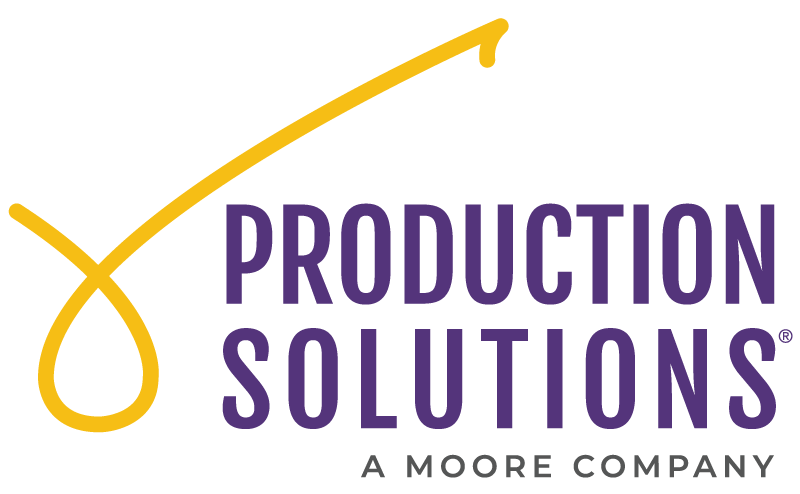Getting Your Digital House in Order Part II: Bringing the Blueprint to Life
 Production Solutions
Production Solutions

- This place is a true fixer-upper.
You have a small or inactive donor file. You aren’t tracking data correctly in your eCRM (or worse, you aren’t even using one). The donation form on your website is buried under 5 clicks, asks 15 additional questions not required for processing the online gift, and the website is virtually unusable on mobile devices. By the way, what is the big deal about Facebook? - It has great bones!
You have a responsive website that was built on a CMS, like WordPress or Drupal, but it has been a bit neglected and could do with some updating. Your house file is still growing, but not at the rate it used to, and your email campaign results are mediocre at best. You have a Google Analytics account but only look at it once or twice a month. You are making an effort on social media and have a decent-sized following, but your posts don’t have the kind of reach or impact that you’d like. - Time for an addition.
Your program is working and running fairly smoothly. The website is responsive, secure, and updated with fresh content regularly. Forms have been optimized for mobile devices and the transaction flow is simple. Your house file is clean and segmented, and campaign results are fairly predictable and positive, but your eCRM isn’t keeping up with the times and you’re starting to feel limited. You have a campaign strategy (along with a calendar) and the support staff in place to execute it. Your social media presence is strong, and you have good levels of engagement on your posts. Nothing is really broken, but you know there is room for improvement. You think it’s time for an addition (a new acquisition campaign, perhaps) but you don’t know where to start.

Digital Fundraising Renovation Checklist
Website
- Make it responsive. Responsive is: device-friendly, regardless of screen size. Images should scale graciously and text should adapt to make reading a snap on phones and tablets. 14% of all online giving originated from a mobile device last year, and that number keeps rising.
- Make it secure. Not to get too technical, but “https” protocol is not just for donation forms anymore. Your entire site should have a security certificate (TLS). If you don’t, you will be publicly shamed with a warning symbol beside your URL on certain browsers, and it could negatively affect your search engine rankings.
- Update your forms. Think clean and simple. Do you really need ALL the info you are asking of donors? The longer and more complicated your form is, the more likely they are to bail. Break long forms into progressive “chunks.”
- Check the flow. If you don’t have a user-experience expert on staff, hire a consultant to review your user and transaction flows. Key words: simplicity and elegance. Is it easy to donate? Are you pre-populating known info? Do you upsell or ask for social shares?
- Track the clicks. Get some basic traffic analysis in place—Google Analytics is a great place to start. You (or your developer) can even set up Google Tag Manager so that you can track specific actions and easily add and adjust tags across the site—this is especially important when you start advertising.
Donor Management & Email Campaigns
- Use an eCRM. This is fundamental to managing your donors and tracking actions. They come in all different flavors and you can find one to fit your budget. No more spreadsheets!
- Keep it clean. Remove duplicates and records with bad addresses. Identify inactive records and make sure you have a reactivation and reengagement strategy in place. If it’s been over 24 months since someone has responded, they probably won’t—let them go!
- Keep it complete. Make sure you have a 360° view of your supporter, including data such as offline giving, wealth profiling, and social media reputation.
- Segment your list. Tailoring a message for different users at different times is a good thing. According to eMarketer, 39% of email marketers that practice list segmentation see better open rates; 28% see lower opt-out and unsubscribe rates; and 24% see better email deliverability and greater revenue.
- Discover what works. Not every universe of donors is the same, though there are some similarities. Seek to know what kinds of messages your donors respond to, what is an ideal message length, what time of day, and which sender name works for your list. If you don’t know, test and test again.
- Make year-end count. Do not, I repeat, do not miss an opportunity for online appeals at year-end. According to Upleaf, “19% of 2015 online giving happened in December with Giving Tuesday as a major catalyst (Giving Tuesday donations increased 52% from 2014).” Make sure your year-end campaign is well-thought-out, well-written, responsive, and timed for maximum benefit.
Acquisition — Obtaining new supporters through social media and Search Engine Marketing (SEM)
- Get a Google Ad Grant. One of the first and easiest steps for a nonprofit to make into the world of paid advertising is to apply for a Google Ad Grant, which affords your organization $10,000/mo to spend on AdWords. Set your goals (more website visitors, more donations), your budget, and your keywords, make sure your tracking system is in place so you can see if your strategies are working, and you are off to the races!
- Post. Post. Post. Building a following on social media takes some time, but even more importantly, it takes consistency. Post and repost. Get a sense of what your engagement level is on Facebook before paying for ads—are people liking and sharing your content? If not, try a few Promoted Posts first. Facebook offers a great way to test digital advertising with a limited budget. The targeting capabilities are really good, so you can reach the exact kind of people you are looking for. You can even upload your own list and target them on Facebook, and even better, find other users who are similar to your existing audience.
- Remarketing/Retargeting. If you’ve ever visited a website, and then, the next day on a totally different site (or social media channel), an ad pops up for the site you visited yesterday, you have been “retargeted.” (If you’ve never experienced that, just visit the Zappos site for a few minutes, then carry on surfing elsewhere.) Retargeting is a way of tracking your site visitors and following them around for a while. A little creepy, but it works. Only 2% of visitors convert (take an action) the first time they visit a site. Friendly reminder ads pull that already-interested audience back to you and give you a second or third shot at engagement.
This high-level checklist can serve as a beginner’s guide for your digital renovation, but it is by no means complete—books have been written on each of the above subjects! As you can see, it takes a combination of many factors to create a comprehensive digital marketing program. Be patient and consistent. Make sure you set aside a budget that allows you to run the program for a given period of time, then adjust as necessary. You’ll have your fundraising dream house before you know it.
The digital marketing professionals at PS Digital are available to help with any of the activities mentioned here. Drop us a note and let us know how we can help you!




